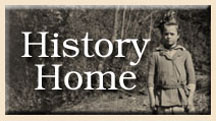

Curriculum: Page 2
From the moment Mattil first set foot in Gatlinburg, he worked diligently to overcome local opposition to agricultural education and ingratiate himself into the local farming community. Thus, while his efforts centered primarily on directing high school boys in a number of projects, such as feeding and caring for school-owned livestock (dairy cattle and poultry), planting and tending food crops (corn, wheat, potatoes), cultivating pasture grasses (hay), constructing “hot houses” (small greenhouses) for winter, and repairing farm machinery, he made every effort possible to work with adult men (farmers) in Gatlinburg and the surrounding communities. Given time, these men came to trust Mattil’s expertise and developed a genuine interest in his lessons. Saturday night poultry classes were particularly popular, drawing attendees to the settlement school from miles around and sparking the formation of a community poultry marketing club.
The Settlement School Staff based its home economics curriculum on a similar philosophy -- that is, that most Gatlinburg girls would end up homemakers, thus making it desirable to give them “proper” training in the domestic arts. As was the case with vocational agriculture, the home economics curriculum aroused a certain degree of resentment and resistance among Gatlinburg women and their daughters. As teacher Anna Dowell put it in 1923, “there is one thing these people are loath to do and that is to take anything out when it is not done right. . . . The habit of ‘any way’ll do’ and ‘what difference will it make’ practiced by mother and grandmother for generations is not easily broken. . . . [The girls] tend to say “‘Can’t see no sense in bein’ so particular about things, no how’.” And yet, in time, girls and women grew to value the program, just as boys and men had grown to value vocational agriculture. Home economics students learned, among other things, to sew, cook, care for small children, and keep a clean house. They also received instruction in interior and exterior home decorating, for it had long been Pi Beta Phi’s desire to replace the cluttered darkness of the mountain cabin with the aesthetic beauty of the “modern” home.
In 1943, thirty-one years after Pi Beta Phi first settled in the Little Pigeon River Valley, Sevier County pledged to assume financial responsibility for primary and secondary education in Gatlinburg. This move was, admittedly, more symbolic than substantive; and yet it freed the fraternity to cultivate what it termed “a finer type of scholarship.”
Given Pi Beta Phi’s heavy involvement in the Southern Appalachian Handicrafts Revival, it should come as no surprise that this “finer type of scholarship” entailed the advent of high school art and handicrafts classes. For not only did the Settlement School Committee and staff see artistic expression as a valuable facet of learning; they saw arts and crafts classes as a sort of apprenticeship program -- one that stood to provide Arrowcraft with a stable base of employees in the coming decades. But the settlement school also invested time and money promoting physical education, music, and the fine arts. In 1945, teacher Lon Moneyhan became the school’s first physical education teacher, and teacher McWilliams Young took up the job of settlement school music teacher. Teacher Lois Fenn, taking a cue from the successful John C. Campbell Folk School in Brasstown, North Carolina, attempted to introduce Gatlinburg schoolchildren to Danish and Swedish folk dances, but with limited success. Many Gatlinburg parents opposed dancing on religious grounds, and so refused to let their children participate. It was not until Fenn reinstituted the courses under the guise of physical education that the parents relented and allowed the classes to continue.
Since 1965, Sevier County has taken full responsibility for funding and developing curriculum for the Gatlinburg school system. Vocational agriculture and home economics classes are now located at the county’s numerous middle and high schools, such as Gatlinburg-Pittman and Sevier County High School; otherwise, one would find little appreciable difference between the original settlement school curriculum and that offered to students at the modern-day Pi Beta Phi Elementary School.
| <<< Page 1 | Page
2 |
 |
|